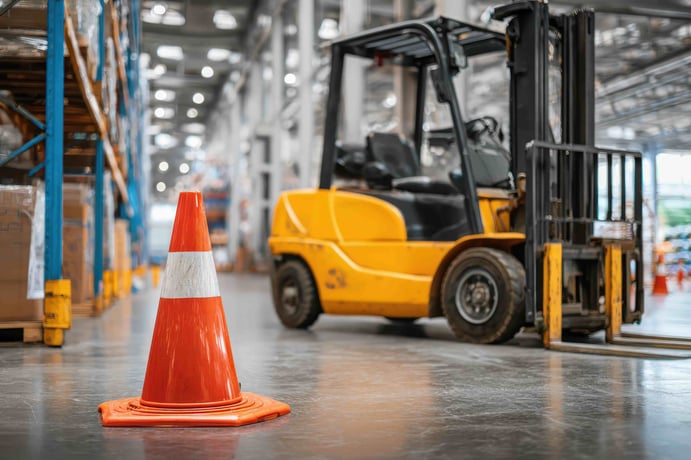In Part One of this three part article about number #8 on OSHA’s annual top 10 list of their most cited standards, we started off by talking about operator training and how OSHA expects employers to certify their operators. To further that discussion, we’re going to talk about what constitutes a qualified trainer and about 1910.178(l)(4), the section dealing with refresher training because this particular section of the standard is one of the five things employers seem to get cited on quite a bit.
There’s a lot of confusion about who is allowed to train and certify PIT operators and what many employers opt to do is send people to what’s called “train the trainer” training where they sit through a few days of material about how to provide this training. OSHA absolutely does not require PIT trainers to be “certified trainers”, instead they require PIT trainers to be “qualified trainers”—which aren’t the same things. Qualified trainers are qualified because they have the knowledge of how to operate PITs safely from the experience they’ve had in doing so, making them good candidates to provide training and evaluate the competency of others. (For more information about what this means, OSHA provided a great letter of interpretation addressing this.)
So, instead of spending money on “train the trainer” courses, a better option is to find out who your most qualified PIT operators are and evaluate their ability to share that knowledge and experience with others and make those people your qualified trainers. To supplement this, you might also consider asking the manufacturers or resellers of your PITs if they can provide some on-site training to help make sure both the formal training and the hands on part are in compliance. Many manufacturers provide this for free or for a very reasonable price, especially if you’ve just purchased their often very expensive PITs.
The final part of training we want to discuss is refresher training because that’s another sticking point for many employers who aren’t quite sure when refresher training is needed and how often. Within the standard, OSHA provided several conditions for when retraining is required. In addition to requiring employers to evaluate every operator’s knowledge and performance at least once every three years, OSHA also requires retraining when:
- The operator has been observed to operate the vehicle in an unsafe manner.
- The operator has been involved in an accident or near-miss incident.
- The operator has received an evaluation that reveals that the operator is not operating the truck safely.
- The operator is assigned to drive a different type of truck.
- A condition in the workplace changes in a manner that could affect safe operation of the truck.
Not only do employers have to keep up with a three year schedule, they also have to be cognizant of how operators are performing and how changes might affect that performance. It’s quite difficult to keep up with performance issues when things like near misses and non-injury incidents aren’t reported or documented. It’s also difficult to know how changes may affect PIT performance if a company doesn’t have a change management program. In fact, employers who don’t log near misses or who only document incidents with injuries are doing themselves a disservice and possibly putting themselves in a bind with OSHA. Reporting near misses and incidents involving PITs provides a window of opportunity for identifying and resolving PIT safety issues before they can become serious problems. It’s those incidents that are supposed to be triggering PIT refresher training and if that’s not being done because the employer doesn’t know these incidents are happening—that’s a big problem. If you’re an employer who doesn’t document these things because you’re still using paper forms and it’s too much to manage, there’s no time like the present to evaluate EHS software like EHS Insight’s Incident Management module where all types of incidents and near misses can be logged with immediate access to reports on those incidents.

Change is another trigger for when PIT refresher training is required and for a lot of employers who don’t have a management of change program, this can sometimes get missed. Unmanaged change is one of the leading causes of incidents so it’s critical for employers to have a good program to manage it. The best way to manage change is by having a good formal program and the right tools like EHS Insight’s Management of Change module to help document, organize and manage changes of all kinds from start to finish.
Now that we’ve discussed all the ways employers struggle with the training part of 1910.178 and things employers can do to improve things, we’re going to shift gears in our third and final part of this article and discuss inspections and maintenance, the remaining two parts of the standard giving so many employers so much grief.

.png)